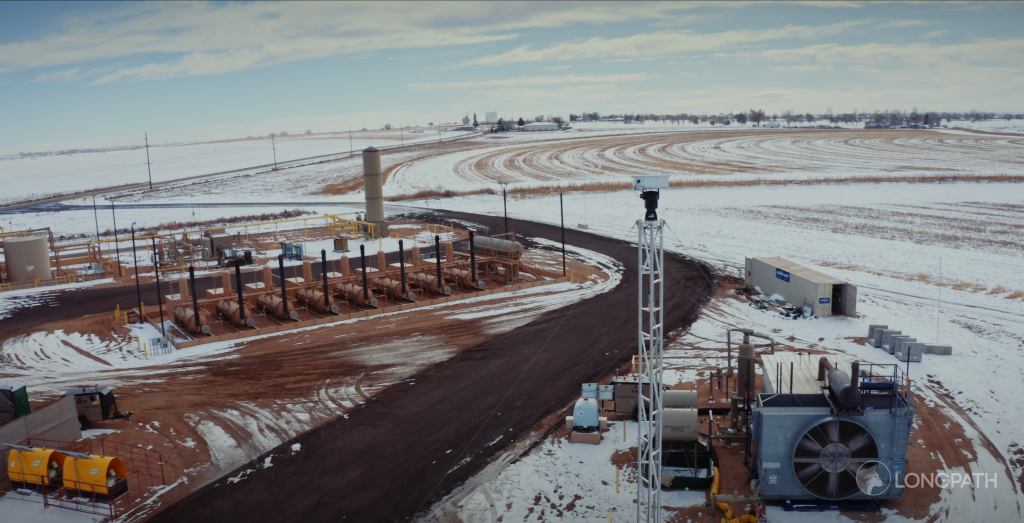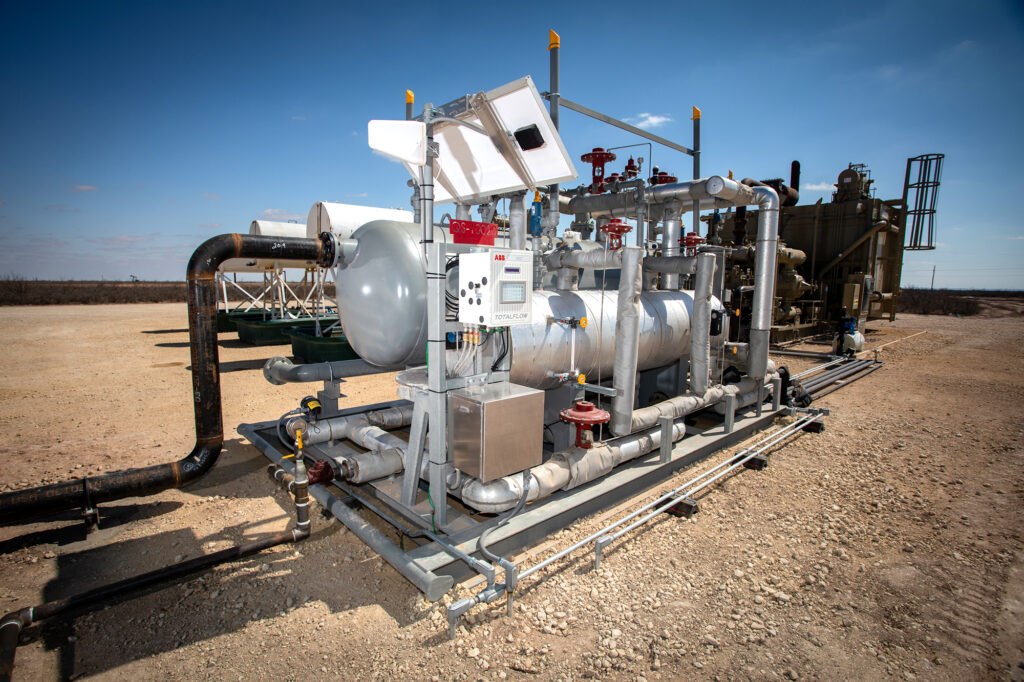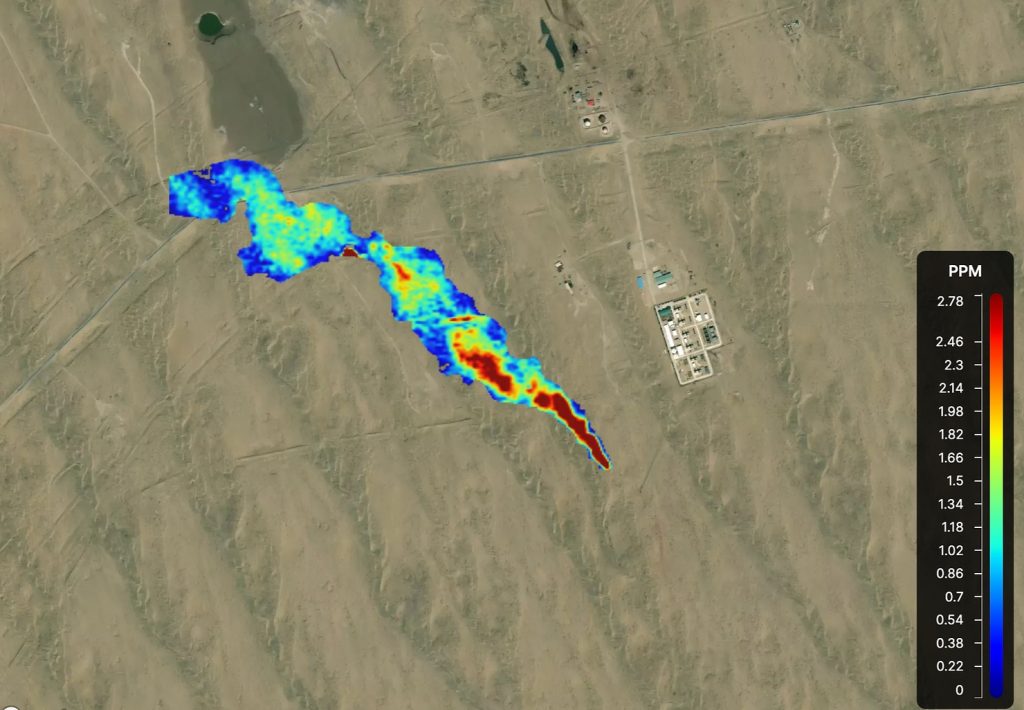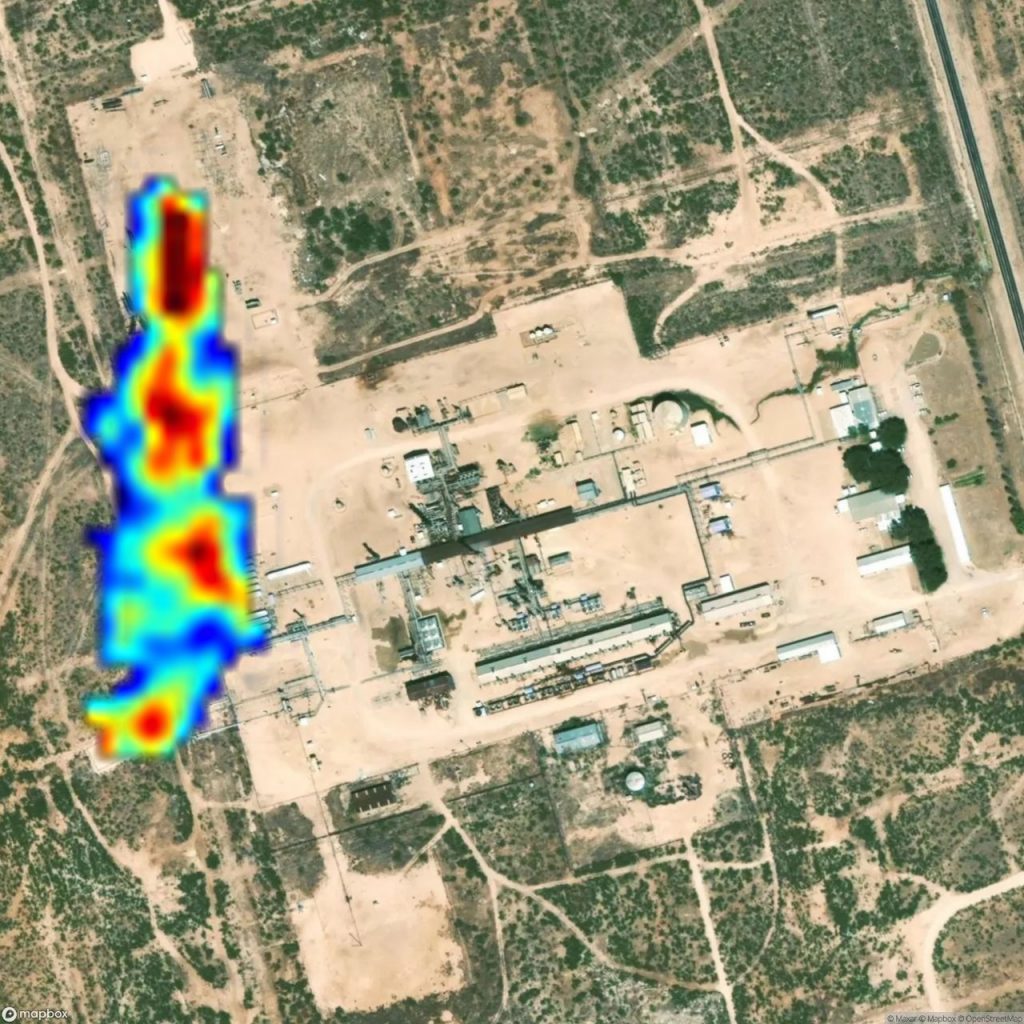Methane emission regulations are tightening, with EPA Quad Oc rules slated to take effect later in 2025. As a result, service companies are offering ways to capture methane efficiently so that producers can actually come out ahead by selling that formerly-lost methane into the market.
Detection methods vary, being literally miles apart. Momentick aggregates and analyzes satellite data to spot leaks. Longpath uses tower-mounted sensors and mirrors in a “monitoring-as-a-service” approach to find leaks from the ground. And in engineering a more efficient gas lift system, Liftrock also paved the way to eliminating methane leaks in those systems.
Eye in the Sky
Omer Shenhar, Momentick’s VP Product, is an expert on methane detection. He notes that it’s only been in the last couple of years that satellite data has become useful for methane detection, both in accuracy and in timeliness. “There are more and more satellites that are better in the matter of resolution,” he explained. To optimize that data, Momentick is aggregating and processing it through the power of AI and deep machine learning.
AI and machine learning “are tough words to hear sometimes, but they really enable us to actually reduce the minimum threshold of methane detection,” he said.
Shenhar related that Momentick integrates data from multiple satellites, each with different capabilities. “Some have a really low spectral ability, and some of them are really high resolution.” Satellite data allows for tracking methane emissions worldwide.
By analyzing data, Shenhar said Momentick can quantify emissions by kilograms per hour, while pinpointing the leak’s location. “We also have what we call PPB [parts per billion], the number of methane particles per billion particles in the air. This is the industry standard.”
Benefits of the Bigger Picture
Most companies currently monitor methane with onsite ground-based sensors. Shenhar feels that because the ground sensors are located so close to the asset, they do catch emissions, “but they have a lot of blind spots.” He added, “There are about five times more methane emissions in the atmosphere than were reported from the ground.”
Both systems can work together. Satellites see the big picture, the super-emitters, but are sometimes hampered by clouds or dust. “And the ground source is really helping with the continuous monitoring, which is 24/7. So they are all working together in the end,” Shenhar said.
It is important to start by establishing a baseline, for several reasons, he said. First, it forms the basis for change detection—when the presence of methane increases or decreases. And second, if a leak is found, having a baseline informs the EPA when it started, for the purpose of determining fines.
The EPA requires monitoring at least quarterly or monthly. If an area is only monitored quarterly and a leak is found, a fine will be assessed since the last time a report showed the facility was clear—meaning it will be for at least three months. That is among the key reasons for continuous monitoring.
Fixer-Upper
Pinpointing the exact spot and fixing it is usually up to the client. Because there can be a delay between the alert and the dispatching of technicians, Shenhar said constant monitoring is key to expediting repair.
Because satellites are client agnostic—Momentick can monitor everyone—they use the data in two ways. One is to supply data to active clients. The other is to approach a non-client with information about a leak discovered by satellite, and say, “Listen, there is some kind of an issue with a couple of your assets. Let’s see how we can solve this together,” Shenhar said.
Cost-Benefit
Shenhar quoted JP Morgan Chase figures that indicate the U.S. energy sector loses between $9 and $11 billion per year from leaked methane. Alternatively, “The cost of changing the infrastructure in those places to mitigate emissions by 70 percent is between $9 and $11 billion as well. So now we have more proof about the science about satellite detection monitoring and we have a business model that we can share. We’ll start seeing more engagement from oil and gas companies.”
Currently about 1.5 percent of produced gas is leaked. The goal is to reduce that to about 0.3 percent, Shenhar noted. He observed that medium-size producers need the most help from third parties like Momentick because they have less capital to invest in their own monitoring systems than the majors do.
LongPath’s Laser System
LongPath CEO Ian Dickinson is also a proponent of continuous monitoring. He noted that most onsite monitors are point sensors, which operate sort of like smoke alarms. They are purchased and installed individually across each site.
Colorado-based LongPath’s technology is different in that it is “like a methane radar, except that it’s laser technology. We can monitor all the facilities within a 20 square kilometer area.” They do that with a central tower and some mirrors that reflect the lasers back to the tower.
“At the endpoint we place these passive retroreflective mirrors,” Dickinson said. The mirrors bounce the light back to a receiver on the tower. That way, he said, “We’re basically creating a laser fence line on the upwind and downwind side of all the facilities.” The difference in methane readings between downwind and upwind sides helps quantify the emission flow rate.
And that flow rate is vital. “It’s one thing to get a concentration rate,” he said. But “It’s another to take in all the atmospherics and all the inversion algorithms involved to get what is an ‘accurate quantified emission flow rate,’ and at the same time getting the full facility spatial coverage.” In other words, quantifying the amount of the leak adds a vital dimension to knowing that there is a leak. Dickinson quoted research showing that their sensors are able to detect flows as low as 0.6 kilograms per hour, with zero false positives.
Scalable and Cost Effective
To expand its reach, LongPath is in the process of installing towers across oil producing areas, including the Permian Basin, with help from a DOE grant. The company’s towers, about 50 feet tall, are set to cover about a 2.5 kilometer radius. Dickinson noted that their range is about five kilometers, but that much data creates an overload, so the 2.5 kilometer radius works best.
With this system there is no need to install dozens of sensors across an entire site. “We can monitor multiple operators with one tower. So the concept is to build out a meshed network of towers, almost like cell coverage. Any facilities under the purview of that tower we can monitor,” Dickinson said.
He added that they bifurcate data so that each client sees only their own, referring to this as “tech-enabled data as a service.” He added: “They’re just paying for the data product—they’re not having to maintain or purchase the system itself.” Also, “It’s very scalable and very low cost.”
Continuous Vigilance
Ongoing monitoring is significant, Dickinson pointed out. For someone flying a sensor-loaded drone four times a year, which is the the EPA’s minimum requirements, “you’re getting somewhere around 16 seconds of view time per year. Well, there are [almost] 32 million seconds in a year, so that doesn’t tell you much about the overall profile.”
Dickinson said the company currently has about 24 clients, ranging from supermajors to small independents. They are working across seven or eight basins. He said more and more operators are getting on board with the necessity of monitoring.
Getting Optimized
Liftrock’s sister company, Flatrock, was in the business of renting gas lift compression equipment. Flatrock’s President, BJ Ellis, saw a need to create more value for clients. “If we can eliminate compressor downtime, we’d be reducing customer’s operating expenses and increasing the value of our relationship with them.”
Based on that premise, Liftrock Integrated Lift Systems was formed in 2016, with the company focusing on developing a gas lift compressor control skid that would significantly reduce downtime from compressor shutdown events. The result of this effort was the QuickSet, which later became today’s Production Optimizer Gas Lift Compression Optimization Skid. This first-generation control skid proved effective, reducing shutdown events by almost 90 percent.
Liftrock management soon realized that QuickSet also held the answer to reducing gas-lift-related methane emissions, an increasingly contentious issue for the industry. The unit’s “closed-loop” design managing the flow of natural gas proved to eliminate up to 100 percent of fugitive methane emissions from gas lift compression operations.
How It Works
The Production Optimizer eliminates the most frequent causes of gas lift compressor downtime, which is liquid level shutdown events. The process of compression continually heats and then cools the gas stream, causing a substantial amount of natural gas liquids to be condensed out of the gas stream. “These liquids must be evacuated off the compressor skid into an atmospheric tank. When these natural gas liquids enter the tank, they immediately flash to gas, generating a considerable amount of methane emissions,” Ellis explained.
Because the liquids are pressurized by a gas stream to move them to the atmospheric tank, a significant pressure drop occurs, causing the temperature of that stream to freeze to the point that liquids can no longer transfer. The result is liquid-level shutdown events.
The Production Optimizer’s original design eliminated those shutdowns and reduced methane emissions by 75 percent by repurposing the old methane source to be used as fuel for the gas-driven engines powering the onsite compressors. This design also eliminated the need for older coping mechanisms, such as using methanol as a thawing agent.
Achieving Zero
With 2020 came new EPA initiatives on methane capture, leading to greater interest from Liftrock customers, who asked Liftrock to close the gap between 75 percent and 100 percent. That last 25 percent, however, consisted of low-pressure and low-volume methane sources such as compressor packing vents that vent at a pressure lower than the required fuel pressure of the engine-driven gas lift compressors.
According to Ellis, “In a new Production Optimizer design, we’ve incorporated a small compressor within the skid that gathers methane emission sources down to as low as a few ounces.” These emissions are plumbed back to the skid, where they are processed and sent back to the compressor inlet. There the gases are re-compressed by the gas lift compressors as injection gas.
With captured gas no longer going to the gas engine, there was another benefit: the previous skid would not work with electric-driven compressors because there was no fuel line to send the captured gas to. The new design sends the captured methane into the inlet of the gas lift compressors, making it applicable in both engine and compressor-driven applications.
Measuring Up
Ellis noted that the skids are outfitted to measure the amount of emissions being mitigated. This information goes into a monthly report sent to clients. “It’s really a monthly ROI [return on investment] statement, quantifying the volume we mitigate and placing a dollar value associated with the current trading value of natural gas,” he said. “It also places a value tied to increased production based on reducing downtime.”
He added that the skids have serviced more than 300 Permian wells since the first installation in 2018.
Most methane emissions systems add complexity to a well site instead of reducing it. “I really think that’s what differentiates our solution versus the others,” Ellis said. “Our solution increases oil production while eliminating 100 percent of methane emissions generated at gas lift facilities, without adding complexity to the process.”
Paul Wiseman writes in the oil and gas sector. His email address is fittoprint414@gmail.com.
















